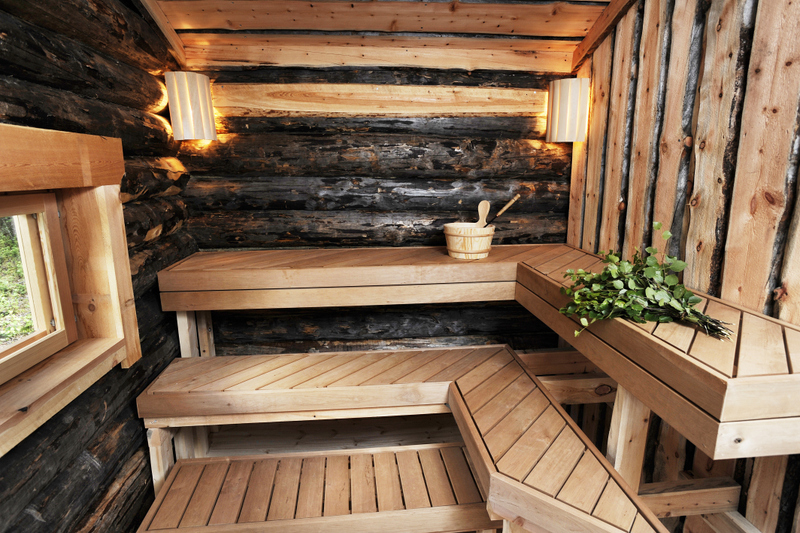How Traditional Sauna can Save You Time, Stress, and Money.
How Traditional Sauna can Save You Time, Stress, and Money.
Blog Article
Our Traditional Sauna Statements
Table of ContentsTraditional Sauna Things To Know Before You Get ThisThe Basic Principles Of Traditional Sauna The 45-Second Trick For Traditional SaunaSome Known Details About Traditional Sauna
Many of the weight shed in a sauna is water loss and is re-gained upon rehydrating. Nevertheless, certainly sauna can be an integral part of a healthy and balanced weight-loss program. To consider the distinctions between traditional and IR saunas, I will certainly divide these right into proven, theoretical, and produced differences.Therefore, the best point in the saunawhich is at the ceiling directly above the sauna heateris commonly between 185 and 190 F. Traditional Sauna. Claims that a traditional sauna exceeds 200 F is just not real and not relevant for electrical saunas marketed in the United States. The temperature level for a far-infrared sauna is usually set in between 120 and 140 F; nonetheless, unlike the standard sauna, the objective in and IR space is not to attain a high temperature level
As a result of this, the temperature level distinction is almost unimportant, considering that extreme sweating leads to both sauna types, however the technique of heating the body is various. In an IR sauna the bather will certainly feel warm and will sweat a lot, however at much reduced temperatures. Hence, if the goal is to invest longer time periods in the sauna, the IR sauna is a great choice.

Not known Incorrect Statements About Traditional Sauna
When the heat is achieved, the aspects cycle on and off to maintain the heat. Most standard sauna individuals delight in putting water over the rocks to create steam to increase sauna humidity levels. The benefits of pouring water over the rocks include: making the space more comfortable, dampening the nasal passages, and allowing the usage of aromatherapy by mixing vital oils with the water.
In a far-infrared sauna, the warm front pass through the body to effectively heat the body and increase the body core temperature level. To attain this enhanced temperature level, Far-infrared emitters produce infrared power which is close to the same wavelength as that which the body normally emitsoften described as the "Crucial Array" of 7 to 14 microns), so the energy is well obtained by the body.
When the power gets in the body, it triggers the body temperature to increase and ultimately causes sweating. In an infrared sauna it is necessary for the emitters/heaters to remain on nearly continuously. Since there is no mass of rocks to keep warmth, the sauna will cool if the emitters shut down.
As pointed out over, the sauna bather in an infrared room intends to position himself in front of running emitters to obtain maximum benefit from the heat. The home heating time for both areas can be extremely various, relying on exactly how the areas are utilized. For a typical sauna, a bather must allow 30-40 mins for the room to attain a preferred temperature level and to properly pre-heat the rocks.
Traditional Sauna Can Be Fun For Anyone
A well created sauna will normally accomplish a temperature level of 150-160 F in about 30-40 mins. For hotter temperature levels, the space may need to warmth for a longer period.
To some, 15 mins was "lost" while the infrared energy heated the timber panels as opposed to heating up a body, while others discover a pre-heated space to be more comfortable and believe an elevated beginning temperature level is needed to begin perspiring. The length of advised read this post here usage for every room is approximately the same (10-15 mins per session); nonetheless, because of the lower air temperature levels and the capability to feel the results of infrared warmth faster than a typical sauna, it is not uncommon for a person to spend a total of 20-30 minutes in an infrared sauna.
Typical saunas tend to be larger (thus make use of more electricity) than infrared saunas, although traditional saunas are absolutely readily available in one and two person sizes. For a two-person traditional sauna, 5x6 or 5x7 size is most preferred. The top bench can pleasantly seat 2 or three people and is likewise enough time to lie down throughout the sauna session.


The ordinary expense per kWH of electrical energy in the united state is about $0.11, so a 4.5 kW heating unit will cost around $.50 to run for one hour, if the heating unit runs continuously for one hour. Normally a sauna heating unit will compete 75% of the very first hour and 50% of subsequent hours on given that the elements cycle once the established temperature level is attained.
Traditional Sauna for Dummies
A 2 person far-infrared space is normally physically smaller than a conventional sauna, usually about 4' x 4' or smaller. The IR furnace is typically 1.5-1.7 kW using a 120 volt 15 amp plug-in service. Given that the area can be utilized faster than a sauna area, we will certainly assume the area is used for to of an hour consisting of warm up time.
There is this hyperlink a seldom reviewed difference in the social experience in between the 2 spaces. While our culture has actually shed a few of the social advantage of the typical sauna experience, it can be really socially gratifying. From household time in the sauna, to heart-felt conversations with Home Page considerable others, to sauna partiesthe conventional sauna experience can result in intimate interacting socially.
Many greater end infrared rooms consist of tinted light therapy, audio systems and full-glass fronts.
Report this page